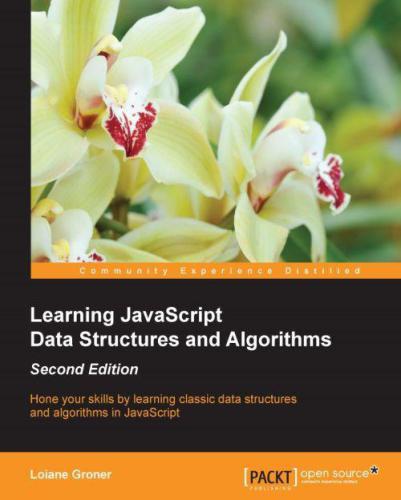

Most ebook files are in PDF format, so you can easily read them using various software such as Foxit Reader or directly on the Google Chrome browser.
Some ebook files are released by publishers in other formats such as .awz, .mobi, .epub, .fb2, etc. You may need to install specific software to read these formats on mobile/PC, such as Calibre.
Please read the tutorial at this link: https://ebookbell.com/faq
We offer FREE conversion to the popular formats you request; however, this may take some time. Therefore, right after payment, please email us, and we will try to provide the service as quickly as possible.
For some exceptional file formats or broken links (if any), please refrain from opening any disputes. Instead, email us first, and we will try to assist within a maximum of 6 hours.
EbookBell Team

5.0
70 reviews
ISBN 10: 1785285491
ISBN 13: 9781785285493
Author: Loiane Groner
This book begins by covering basics of the JavaScript language and introducing ECMAScript 7, before gradually moving on to the current implementations of ECMAScript 6. You will gain an in-depth knowledge of how hash tables and set data structure functions, as well as how trees and hash maps can be used to search files in a HD or represent a database. This book is an accessible route deeper into JavaScript. Graphs being one of the most complex data structures you'll encounter, we'll also give you a better understanding of why and how graphs are largely used in GPS navigation systems in social networks.
Toward the end of the book, you'll discover how all the theories presented by this book can be applied in real-world solutions while working on your own computer networks and Facebook searches.
1. JavaScript—A Quick Overview
JavaScript data structure and algorithms
Setting up the environment
The minimum setup to work with JavaScript
Using web servers (XAMPP)
It's all about JavaScript (Node.js)
JavaScript basics
Variables
Variable scope
Operators
Truthy and falsy
Functions of the equals operators (== and ===)
Control structures
Conditional statements
Loops
Functions
2. Arrays
Why should we use arrays?
Creating and initializing arrays
Accessing elements and iterating an array
Adding elements
Using the push method
Inserting an element in the first position
Using the unshift method
Removing elements
Removing an element from first position
Using the shift method
Adding and removing elements from a specific position
Two-dimensional and multidimensional arrays
Iterating the elements of two-dimensional arrays
Multi-dimensional arrays
References for JavaScript array methods
Joining multiple arrays
Iterator functions
Iterating using the every method
Iterating using the some method
Iterating using forEach
Using map and filter
3. Stacks
The stack data structure
Creating a stack
Pushing elements to the stack
Popping elements from the stack
Peeking the element from the top of the stack
Verifying if the stack is empty
Clearing and printing the elements of the stack
Using the Stack class
EcmaScript 6 and the Stack class
Declaring the Stack class using ES6 syntax
ES6 classes with scoped Symbols
ES6 classes with WeakMap
Solving problems using stacks
Decimal to binary
The base converter algorithm
Summary
4. Queues
The queue data structure
Creating a queue
Enqueue elements to the queue
Dequeue elements from the queue
Peeking the element from the front of the queue
Verifying if the queue is empty
Printing the elements of the queue
Using the Queue class
The Queue class using ECMAScript 6 syntax
The priority queue
The circular queue - Hot Potato
JavaScript task queues
Summary
5. Linked Lists
The linked list data structure
Creating a linked list
Appending elements to the end of the linked list
Removing elements from the linked list
Inserting an element at any position
Implementing other methods
The toString method
The indexOf method
The isEmpty, size, and getHead methods
Doubly linked lists
Inserting a new element at any position
Removing elements from any position
Circular linked lists
Summary
6. Sets
Structuring a dataset
Creating a set
The has (value) method
The add method
The delete and clear methods
The size method
The values method
Using the Set class
Set operations
Set union
Set intersection
Set difference
Subset
ES6 – the Set class
ES6 Set class operations
Simulating the union operation
Simulating the intersection operation
Simulating the difference operation
Summary
7. Dictionaries and Hashes
Dictionaries
Creating a dictionary
The has and set methods
The delete method
The get and values methods
The clear, size, keys, and getItems methods
Using the Dictionary class
The hash table
Creating a hash table
Using the HashTable class
Hash table versus hash set
Handling collisions between hash tables
Separate chaining
The put method
The get method
The remove method
learning javascript data structures and algorithms 3rd edition github pdf
learning javascript data structures and algorithms third edition
learning javascript data structures and algorithms fourth edition
learning javascript data structures and algorithms second edition
learning javascript data structures and algorithms second edition pdf
Tags: Loiane Groner, JavaScript, Data